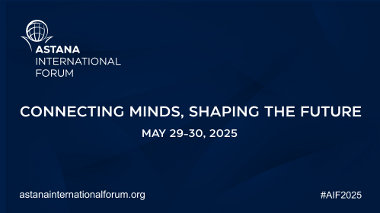ASTANA – Kazakhstan has vast opportunities and resources for agricultural development. It is already one of the world’s top 10 wheat producers and a global leader in exporting flour.

In 2011, the country achieved a record crop of nearly 27 million metric tons. This made it possible to set the country’s grain export target at nearly 15 million metric tons for the 2011/2012 marketing year.
Kazakhstan also exports large amounts of cotton, leather and wool. Cotton contributes 15 percent of total agricultural products and leather and wool amount to 25 percent.
However, President Nursultan Nazarbayev has warned that the agriculture sector requires support and a high-quality plan for its future development.
“One of the crucial points we must focus on is the modernisation of agriculture. Kazakhstan should develop farming, and small and medium businesses in the agricultural sector. Food products should become the main export of the country. Kazakhstan has all that it takes to achieve this goal,” the president said.
In order to promote the rural economy, the government is implementing several programmes to improve the investment climate for farming. The country’s farmers are gradually embracing new technologies, reducing production costs and winning new niches for their exports in regional markets.
The government of Kazakhstan has approved a new agro-industrial development plan for 2013-2020. The programme is to focus on four key areas:
• financial restructuring;
• promoting goods, works and services availability for agro-industrial companies;
• developing the state support system for agro-industrial companies;
• strengthening the state regulation system for the agro-industrial sector.
“We intend to support all priority agriculture sectors, including animal husbandry, meat projects, the development of moisture saving technologies and the Zhaylau programme. All investment projects undertaken by private companies will get our support in this programme,” said Yevgeny Aman, who until recently served as executive secretary of the Ministry of Agriculture .
Prime Minister Serik Akhmetov has said that the main task of the programme is to increase the role of high tech production in agriculture and to give more state aid to the rural population.
“The Agro-Industrial Complex Development Programme for 2013-2020 will be adopted this February and 3 trillion tenge will be allocated to the development of agriculture within it,” the prime minister said.
Agriculture Minister Asylzhan Mamytbekov said the 2013-2020 funding programme will increase annual state funding for agriculture by 400 percent per year compared with 2012.
Mamytbekov said that, by 2020, the volumes of agricultural production would grow by 150 percent per year and agricultural labour productivity would rise by 300 percent per year. He said export earnings from the sale of agricultural products rwould rise by 20 percent per year. The 2013-2020 programme would also attract 15 trillion tenge of private investment into agriculture.
Valentin Dvurechenski, the head of the Kostanay Research Institute of Agriculture, has worked in the agricultural sector for over 50 years. He said the new programme would transform national agriculture.
“We joined the Customs Union and plan to join the World Trade Organisation. The new programme will help us to be competitive. It will allow Kazakhstan to make a breakthrough in agriculture,” he said.
President Nazarbayev has made agricultural development a high national priority. And he has stressed the importance of making microcredits easily available in rural areas.
Microcredits issued through the Fund for the Financial Support of Agriculture (FFSA) are the main source of credit for the rural population. So far, the fund has provided microcredits for more than 65,000 people, comprising 63 percent of all credits issued in rural areas.
Credit unions play a significant role in providing credit for agricultural producers. Some 161 credit unions have already been established. Between 2001 and the end of 2012, more than 91 billion tenge has been lent to agricultural producers.
In 2012, the FFSA extended 3,732 microcredits totalling 3.14 billion tenge to agricultural producers. Since the FFSA programme was launched, the fund has extended 66,662 microcredits for rural area residents worth 17.9 billion tenge. These microloans financed jobs for 71,695 people and paid for the purchase of 383,000 cattle and grain grown on 52,000 hectares (128 acres) of land.
The FFSA also allocated 11.2 billion tenge to support rural area residents and agricultural manufacturers through different programmes last year.
Some 90.7 percent of microcredits extended in 2012 were used for livestock farming development, 2.3 percent for growing crops and seven percent to finance businesses.
Loans have been issued to buy farming machinery and to boost circulating capital to develop food production, rural tourism, catering, trade, hotel businesses, farming and fish processing.
In autumn 2012, 1,000 agricultural businesses from 21 countries showcased their products at the KazAgro and KazFerma exhibitions in Astana. Participants came from Australia, Austria, Belarus, Brazil, Canada, the Czech Republic, Denmark, France, Germany, Greece, India, Italy, Netherlands, Panama, Russia, South Korea, Spain, Switzerland, Turkey, Ukraine and the United States.
The main goal of the exhibitions was to increase the competitiveness of Kazakhstan farmers and related businesses by implementing new technologies in production, and to promote sales in domestic and foreign markets.
The exhibitions displayed the latest developments in agricultural machinery, livestock breeding, plant growing, cattle and poultry support systems, breeding, veterinary care and feeding.


